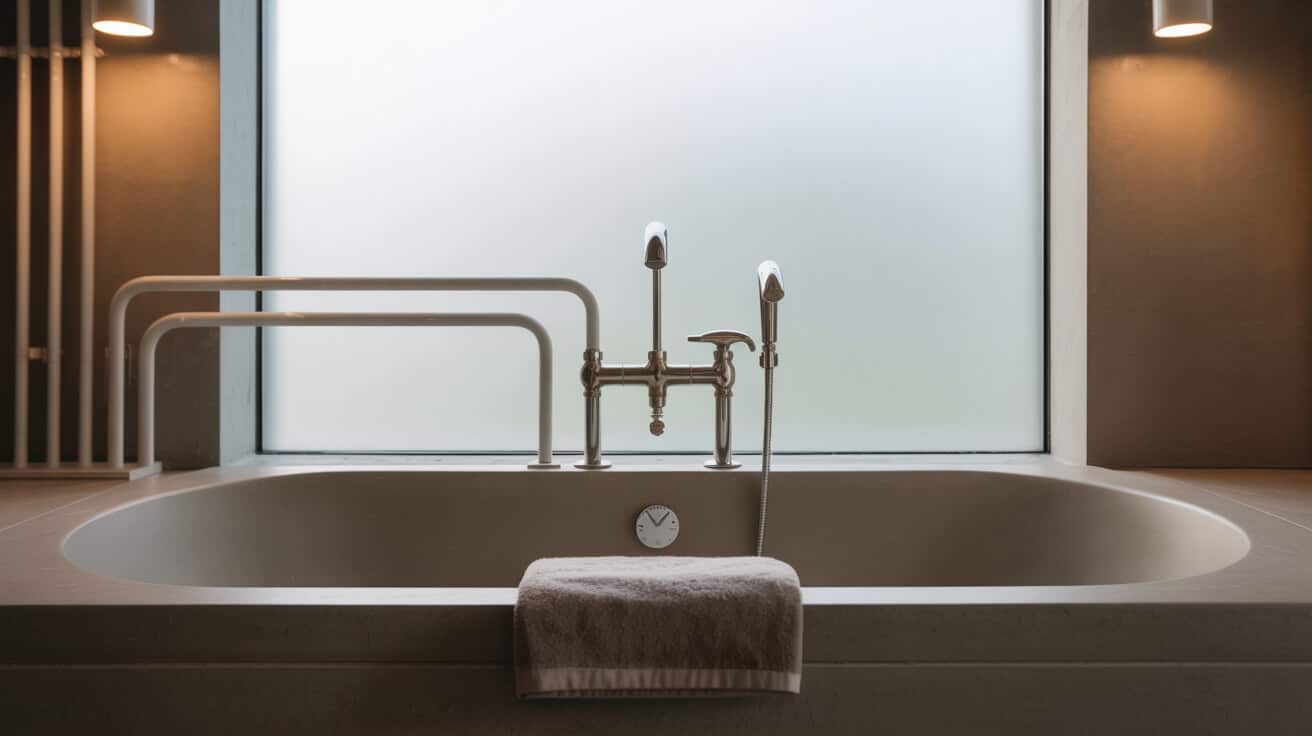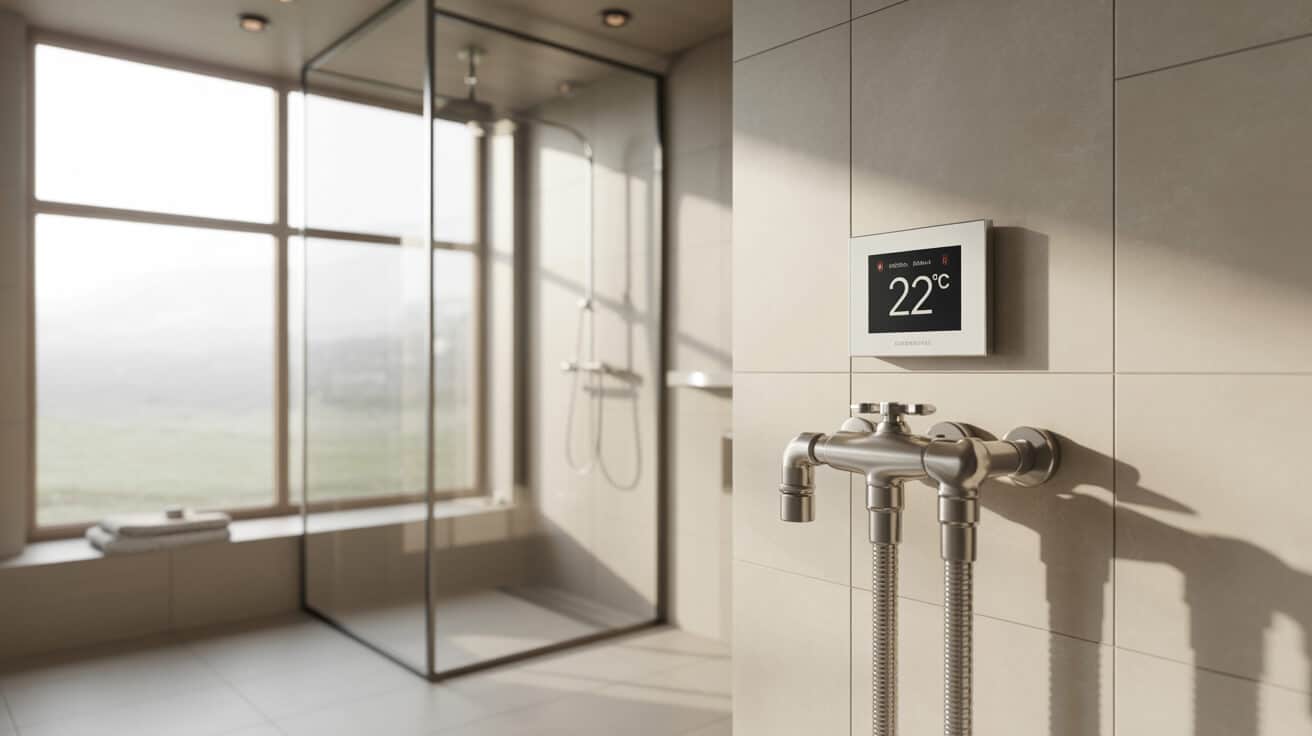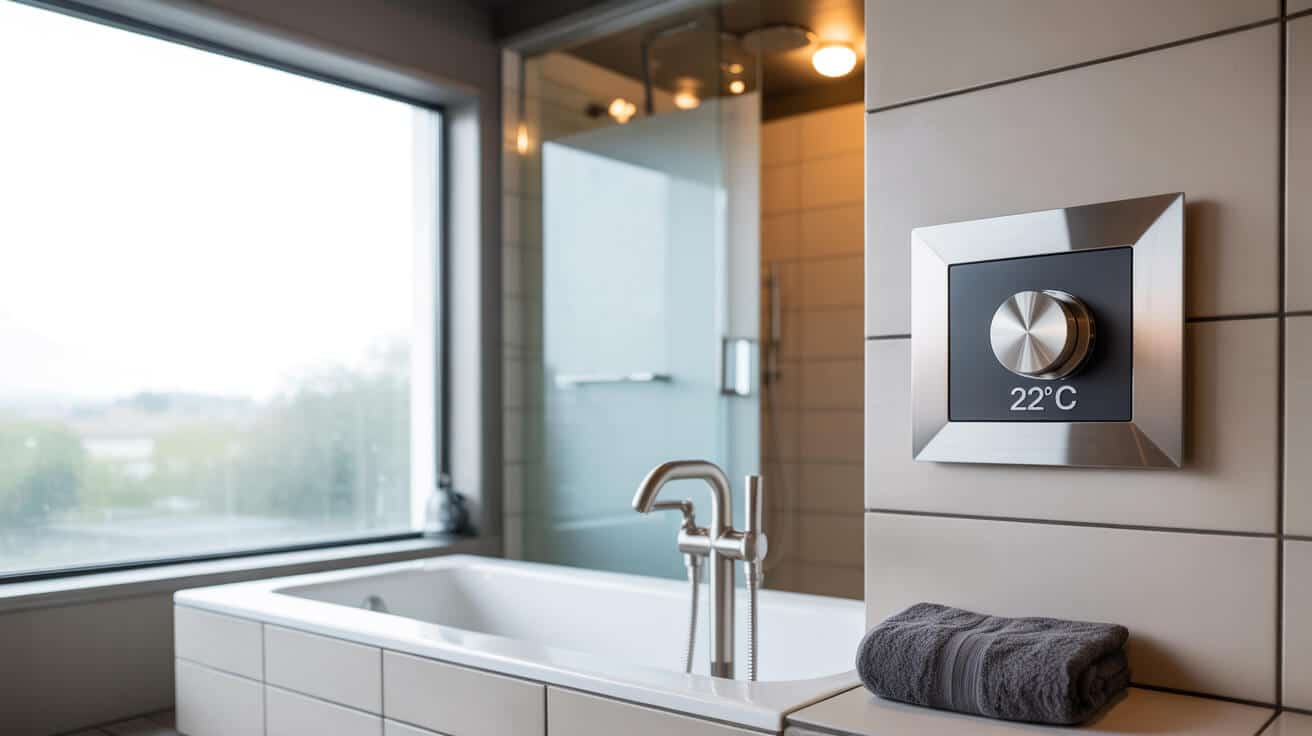Reliable temperature regulation shapes perceptions of comfort, safety, and efficiency within homes and buildings. The mechanical room thermostat, shaped by decades of engineering, allows occupants to exercise direct control over their living and working environments through a familiar dial or slider. Its robust construction and intuitive interface reduce barriers to user engagement, providing universal functionality regardless of a user’s technical background or familiarity with newer digital technologies.
For property owners, landlords, and facilities managers, this device represents a bridge between tradition and compliance—delivering consistent performance and serving as an anchor in systems where reliability and simplicity are prioritised. In properties serviced by trusted providers such as Plumbers 4U, mechanical thermostats are often evaluated for ongoing reliability, ease of use, and conformity to evolving efficiency standards.
Etymology or name origin
The term “thermostat” merges the Greek “thermo-” (heat) with “-stat” (standing, regulating), reflecting its core function as a heat-regulating apparatus. Early references in the late nineteenth century documented the rise of mechanical thermal controls in both engineering literature and consumer product catalogues. Over time, usage shifted from broad descriptions of any temperature-regulating mechanism to specifically denote precision-built automatic devices designed for ambient climate management.
Overview and context
Mechanical room thermostats serve as the primary user-facing controls in many heating installations. These devices translate the human desire for comfort into actionable system responses, making the act of managing warmth accessible and predictable.
Position in property climate control
Placed within living areas, corridors, or shared zones, the thermostat acts as the system’s sentinel. It senses average air temperature and signals the boiler or heating valve to either initiate or cease operation. This arrangement empowers your ability to regulate ambiance, stabilise fuel use, and minimise unnecessary energy expenditure.
Relations to system components
Mechanical thermostats connect via low-voltage or mains wiring to boilers, circulation pumps, electrically actuated valves, and discontinuous heaters such as radiators. Their on/off pattern orchestrates the operation of complex networks, acting in harmony with timers and programmers.
Market prevalence and typical use cases
While digital and “smart” thermostats gain ground, mechanical models persist in older homes, rental properties, and environments where simplicity is a strategic asset. These devices are routinely specified for their backward compatibility, low maintenance burden, and tactile feedback, essential for clients who prioritise dependability and clarity of control.
History
Origins
Mechanical thermostatic control surfaced alongside the evolution of central heating, hot air furnaces, and temperature feedback loops in the nineteenth century. Initially, installers employed manual switching or rudimentary thermostatic elements tuned for specific appliances, such as stoves and water heaters. With the proliferation of plumbed central heating and universal wiring codes, the mechanical room thermostat matured into a refined, mass-produced component.
Industrial standardisation
By the mid-twentieth century, manufacturers such as Honeywell, Danfoss, and Drayton introduced modular, bimetal-based thermostats designed to fit any standard heating system. Industry-wide adoption followed, driven by regulatory emphasis on efficient fuel use, consumer demand for convenience, and mass electrification. Associations set baseline protocols for wiring, calibration, and safety, cementing the mechanical thermostat’s role in both domestic and commercial settings.
Contemporary development and trends
Today, mechanical room thermostats incorporate improved materials, anti-corrosion features, and heat-stable plastics or alloys, supporting longer service lives and more consistent performance. Progressive property management and compliance services—including those offered by Plumbers 4U—routinely inspect, maintain, and replace these devices. As energy performance regulations evolve, companies adapt installation practices to ensure ongoing compliance and optimal operation.

Operating principle and components
The mechanical room thermostat operates on feedback control, enacting changes through physical displacement rather than programmed logic.
Bimetallic sensor function
At its core, the device contains a bimetallic strip or coil, formed by layering two metals with differing thermal expansion rates. As the surrounding air temperature shifts, these metals curve or flex, translating minute thermal variations into mechanical movement. When a threshold is reached, the strip completes or breaks an electrical circuit, signalling the heating system to cycle.
Dial and setpoint adjustment
An external dial or slider allows you to select your target temperature. The mechanical linkage, directly tied to the bimetallic sensor, adjusts the switching point accordingly. This simplicity offers immediate feedback to your adjustments, avoiding ambiguity inherent in menu-driven digital controls.
Switching relay and wiring terminal
Most models employ either a micro-switch or conductive contact, connected via screw terminals to two or three system wires. The configuration enables a “call for heat” circuit, often in line with additional timer or programmer modules in the broader system.
Calibration and adjustment methods
Factory calibration aligns the dial marking with accurate room temperature response. Field adjustments correct for drift due to mechanical wear, dust accumulation, or repeated manual use. Qualified professionals inspect calibration during routine service or system upgrades.
Functional role in plumbing and heating
A mechanical room thermostat’s practicality emerges from its role as a point of direct intervention in the heating cycle.
Direct boiler modulation
When sensed air temperature dips below your chosen setpoint, the closed circuit prompts the boiler or heating element to activate. Once the set temperature is achieved, the thermostat opens the circuit, pausing heating output and conserving energy. This cycle repeats continually, ensuring ambient stability within a narrow temperature range.
Integration with multi-zone and underfloor heating systems
In larger or subdivided properties, multiple thermostats may control individual heating zones or underfloor heating circuits. Each unit governs its own area, allowing your living spaces or commercial environments to reflect diverse usage patterns and comfort preferences.
Interaction with timers and programmers
Mechanical thermostats frequently operate in conjunction with electromechanical or digital programmers. Timers define permissible heating periods, while the thermostat ensures temperature-based response within those windows.
User interface and control logic
Device interaction is designed to be intuitive. Dial movement creates a physical “click” at the activation threshold, often accompanied by an indicator light. This kinesthetic feedback appeals to users desiring tactile certainty in controlling their environment.
Types and classifications
Dial/mechanical models
Traditional rotary or slider models, characterised by prominent temperature scales and durable casings, form the bulk of existing mechanical thermostats. These models offer the highest compatibility across wiring standards and heating infrastructure.
Digital and programmable models
Hybrid or digital models may employ electronic sensors beneath a seemingly mechanical dial, introducing more precise measurement or limited scheduling capability. True programmable thermostats extend flexibility, allowing users to define multiple setpoints and time-based variations.
Smart and remote variants
Next-generation devices incorporate wireless control, phone app integration, and machine learning, but these features remain external to the mechanical form factor. Properties owned or managed by you may host both mechanical and smart thermostats, each serving distinct operational roles or occupant needs.
Retrofit compatibility
Mechanical thermostats boast unparalleled retrofitting capability, fitting legacy electrical schemes or interfaces where digital controllers may require rewiring, adapter plates, or additional power sources.
Installation and placement
Optimal installation ensures responsiveness, minimises error, and supports regulatory compliance.
Best position for accuracy
Industry best practice dictates placement at “living height” (1.5 m above floor), away from direct sources of heat, cold, or air movement. Walls facing interior spaces are preferred, as exterior-facing walls can induce thermal bias.
Wiring considerations (2-wire versus 3-wire)
Most domestic installations utilise two wires: live and switched live. A third wire, often a neutral, may be included for indicator lights or advanced features. Ensuring correct polarity and terminal seating is essential to avoid malfunction or safety risk.
Environmental factors
Your thermostat’s effectiveness is impacted by sun exposure, proximity to doors or windows, and local air stratification. Even furniture, curtains, or large appliances can distort readings, making professional placement critical—especially important for properties relying on compliance with evolving energy regulations.
Installer and DIY notes
Mechanical models are often marketed as serviceable for skilled DIY users. Nonetheless, professional installation, available through registered companies such as Plumbers 4U, may yield higher long-term accuracy, reduce the risk of electrical faults, and produce necessary documentation for landlord or insurance compliance.

Performance and efficiency
Mechanical room thermostats exhibit predictable, quantifiable characteristics that shape both convenience and cost.
Sensitivity and measurement accuracy
Typical sensitivity allows for adjustment within a range of ±1–2 °C. Over time, repeated use, exposure to contaminants, or physical shock can degrade performance. Your regular servicing schedule should include function tests to ensure ongoing accuracy.
Temperature deadband and hysteresis
The built-in deadband—a buffer around the setpoint necessary for switch longevity—prevents frequent cycling but can result in brief periods of over- or under-heating. This phenomenon, referred to as hysteresis, is a design trade-off between system durability and thermal precision.
Effect on energy use
By directly linking user intent to boiler cycling, mechanical thermostats help reduce unnecessary energy expenditure. Consistent, measured control supports achievement of minimum EPC (Energy Performance Certificate) standards, improving marketability and regulatory standing of your building or property portfolio.
Maintenance interval and lifespan
Mechanical thermostats can serve reliably for over a decade under normal conditions. Proactive property management includes periodic checks for drift, stuck mechanisms, or dirt accumulation, ensuring longevity and avoiding avoidable system failures.
Legal and regulatory considerations
Building regulations
Heating control regulations—such as the United Kingdom’s Part L and relevant European standards (EN 60730)—establish thresholds for control system efficiency, installer competence, and user accessibility. Compliance is verified through inspection, equipment certification, and commissioning documentation.
Landlord and property manager obligations
Landlords are mandated to ensure tenants enjoy safe, effective, and regulative-compliant heating controls. Inadequately maintained or obsolete thermostats may expose your company to legal liability, rent penalties, or insurance complications.
Installer and manufacturer standards
Manufacturers are required to submit devices for third-party testing, maintaining records of conformity and warranty. Installers, including Plumbers 4U personnel, maintain competence through certification and regular skills updating, providing added assurance to building owners and letting agents.
Insurance and audit
For commercial properties or rental portfolios, evidence of suitably specified, installed, and maintained thermostats strengthens position during audits or insurance claims. Regular service from registered providers meets both explicit and tacit compliance requirements.
Challenges and technical limitations
Placement and deadband errors
Intrinsic weaknesses include susceptibility to poor placement and measurable deadband. If a thermostat is installed in a location unrepresentative of the room (e.g. near a radiator), it may prompt premature or delayed system response, causing discomfort or inflated bills.
Upgrade challenges
Retrofitting a digital or smart controller into an existing mechanical thermostat’s housing may require rewiring or additional modules. Where system wiring is ambiguous or ageing, professional assessment is strongly recommended.
Comparison with modern controls
Modern thermostats can adapt to occupancy, learn your behavioural patterns, or be controlled from a distance. Mechanical models, by contrast, rely on manual input and fixed-response architecture. For users prioritising adaptability and fine-grained control, the evolution of heating technology presents compelling alternatives.
Failure modes and troubleshooting
Common mechanical issues include calibration drift (setpoint and actual temperature misalignment), stuck switches (preventing correct cycling), or contact wear due to arcing or dirt. Troubleshooting involves visual inspection, test cycling, and, where necessary, replacement.
Stakeholder perspectives
Homeowners
Mechanical thermostats offer tangible, immediate control of your living environment. The straightforward interface fosters trust and confidence, especially for users less inclined to interact with screens or menus.
Landlords and letting agents
You derive assurance from the mechanical thermostat’s durability and simplicity in the context of rental turnovers, routine inspections, and compliance audits. Replacement costs remain modest, and documentation is straightforward.
Property managers
For managers overseeing multifamily, commercial, or institutional assets, mechanical thermostats represent a low-maintenance solution that fits legacy and contemporary systems alike. Their reliability supports operational continuity and regulatory alignment.
Contractors, installers, and apprentices
Professional installers value the universality of mechanical thermostats. Simplicity in wiring and predictability in behaviour streamline both installation and on-call troubleshooting for companies like Plumbers 4U. The device serves as a training tool for apprentices learning foundational heating control principles.
Impact and significance
Role in energy management policy
Mechanical thermostats underpin much of the energy efficiency infrastructure found in Europe’s and North America’s existing housing stock. Their direct influence on heating cycles supports climate initiatives and fuels savings ambitions.
Contribution to EPC and audit outcomes
Properties equipped with functioning thermostatic controls fare better in energy assessments, influencing saleability and rental status. Regular documentation of testing and maintenance increases compliance confidence for your company or personal asset.
Industry and cultural legacy
The mechanical room thermostat has become emblematic of occupant empowerment in its most tactile form. It has been referenced in engineering education, art, and social commentary as both a solution to discomfort and a metaphor for environmental mastery.
Ongoing usage in retrofits and low-tech environments
Properties with limited access to digital infrastructure or occupants with accessibility considerations continue to benefit from the ubiquity and tractable design of mechanical thermostats.
Future directions, cultural relevance, and design discourse
Emerging energy policies and building codes continue to drive the gradual shift toward fully digital controls. Nevertheless, mechanical thermostats retain cultural relevance as a symbol of direct, comprehensible interaction. Design trends posit a future of hybrid controls, merging the reliability and emotional comfort of tangible dials with the adaptability of networked systems.
Debate persists regarding the best pathway for accessible heating control in rented, social, or multi-generational housing. The mechanical thermostat serves as both a foundational technology and a recurring point of return in discourses about privacy, automation, and user autonomy. As digital devices proliferate, the trusted mechanism at the heart of room thermostats continues to inform both the structure and the purpose of the next generation of climate control systems.

